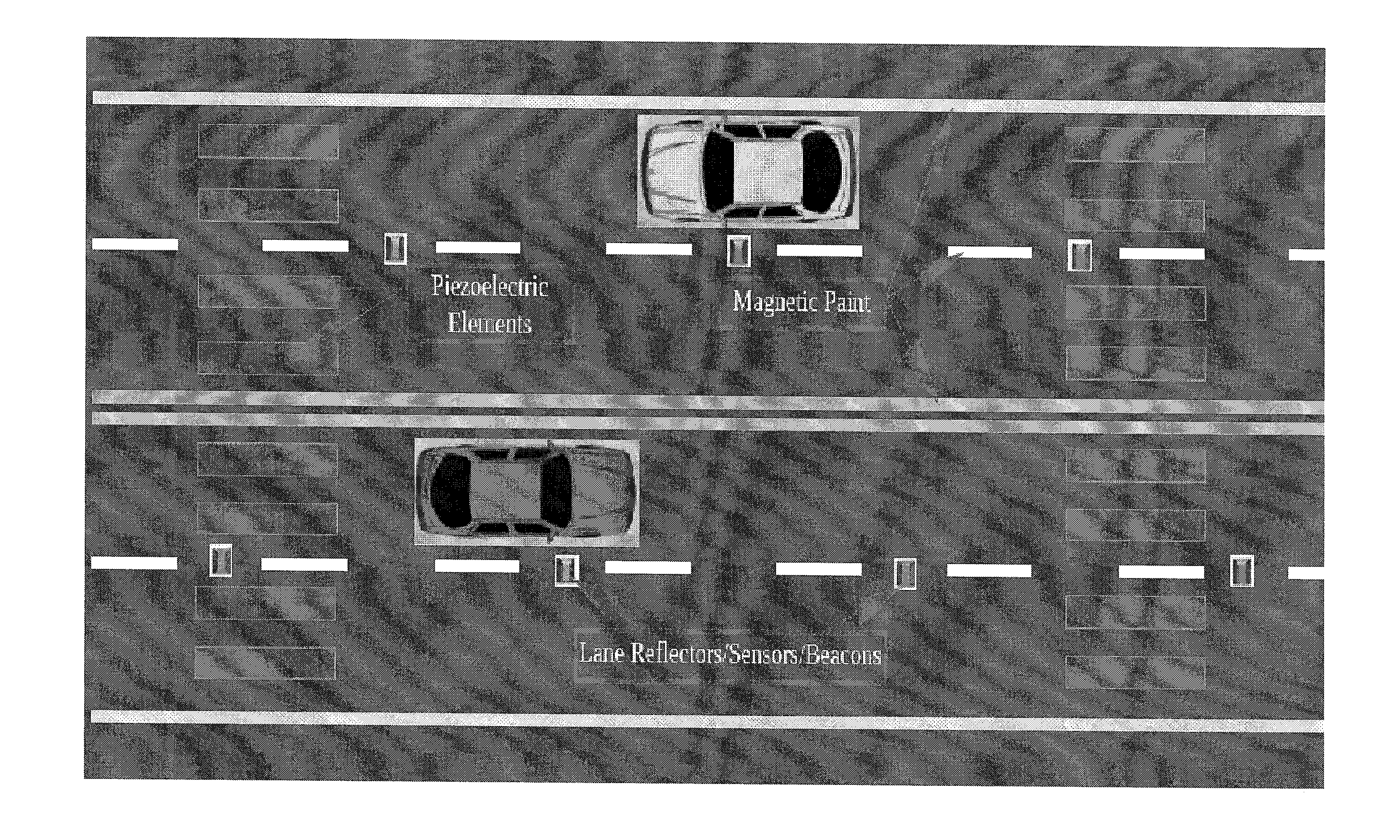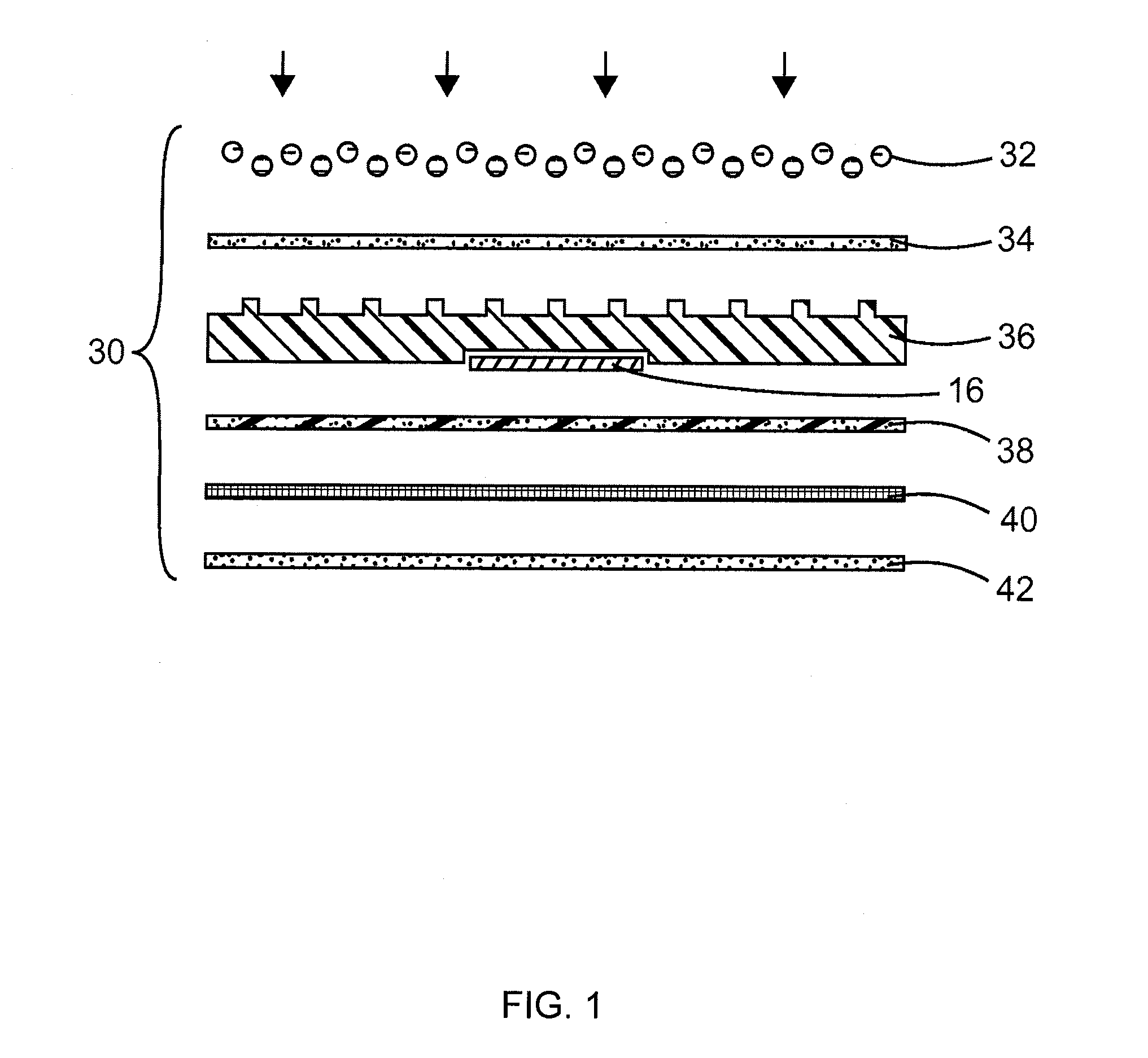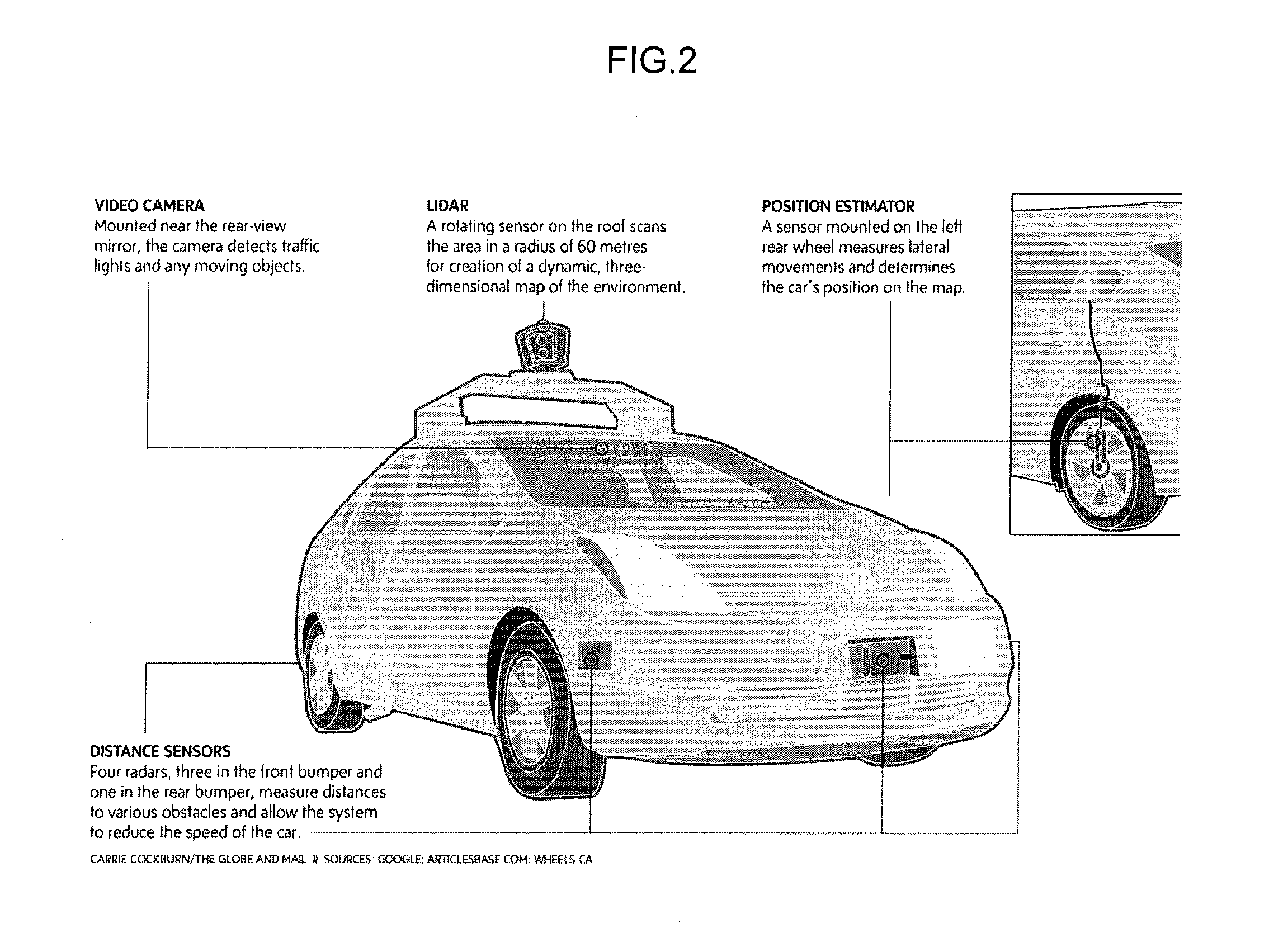Method and System for Autonomous Vehicles
a technology for autonomous vehicles and vehicles, applied in the field of methods and systems for autonomous vehicles, can solve the problems of ineffectiveness, inability to accurately measure the distance between the camera and the vehicle, etc., and achieve the effect of cost and expense, convenient self-driving and steering mechanisms, and a lot of robustness
- Summary
- Abstract
- Description
- Claims
- Application Information
AI Technical Summary
Benefits of technology
Problems solved by technology
Method used
Image
Examples
Embodiment Construction
[0094]As described above and as illustrated in the figures, a first layer is a layer of glass beads. The glass beads are adhered to a textured rubber base 36 by a layer of adhesive. Inside the textured rubber base 36 there is a recess for receiving an RFID tag. The RFID tag is then held in place by a fiberglass netting and a layer of adhesive. The fiberglass netting also provides strength to the pavement marking material. Lastly, there is a layer of adhesive for adhering the pavement marking material to a road. Alternatively, the layer of glass beads and layer of adhesive may be substituted with Diamond Grade™ High Intensity Prismatic Sheeting, Series 3930, commercially available from 3M Company based in St. Paul.
[0095]In certain embodiments, a raised pavement marking material is employed that includes a top surface and a bottom surface opposite the top surface, two opposing angled side surfaces adjacent the top surface and bottom surface, with such surfaces being suitable for a mag...
PUM
 Login to View More
Login to View More Abstract
Description
Claims
Application Information
 Login to View More
Login to View More - R&D
- Intellectual Property
- Life Sciences
- Materials
- Tech Scout
- Unparalleled Data Quality
- Higher Quality Content
- 60% Fewer Hallucinations
Browse by: Latest US Patents, China's latest patents, Technical Efficacy Thesaurus, Application Domain, Technology Topic, Popular Technical Reports.
© 2025 PatSnap. All rights reserved.Legal|Privacy policy|Modern Slavery Act Transparency Statement|Sitemap|About US| Contact US: help@patsnap.com



